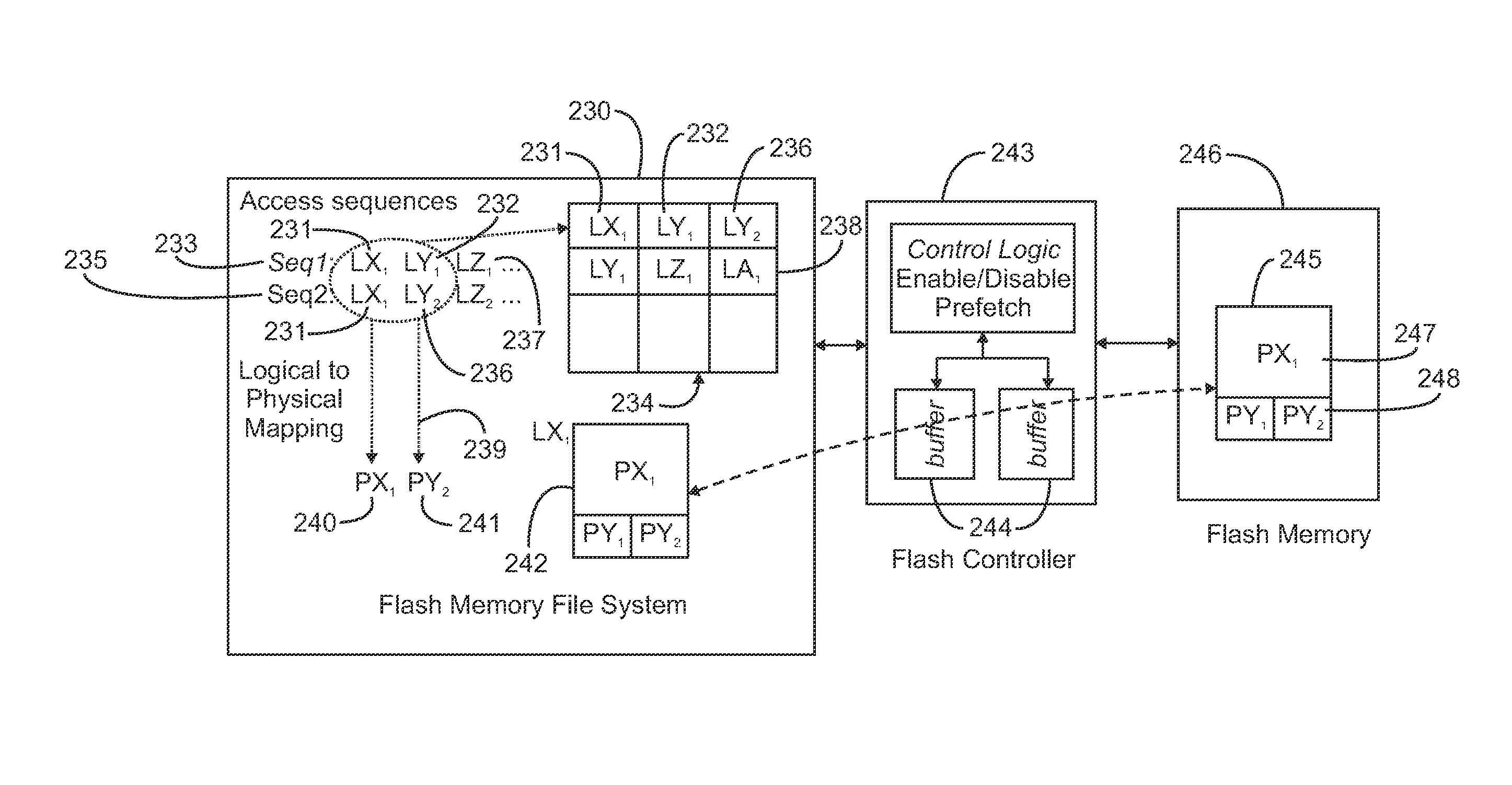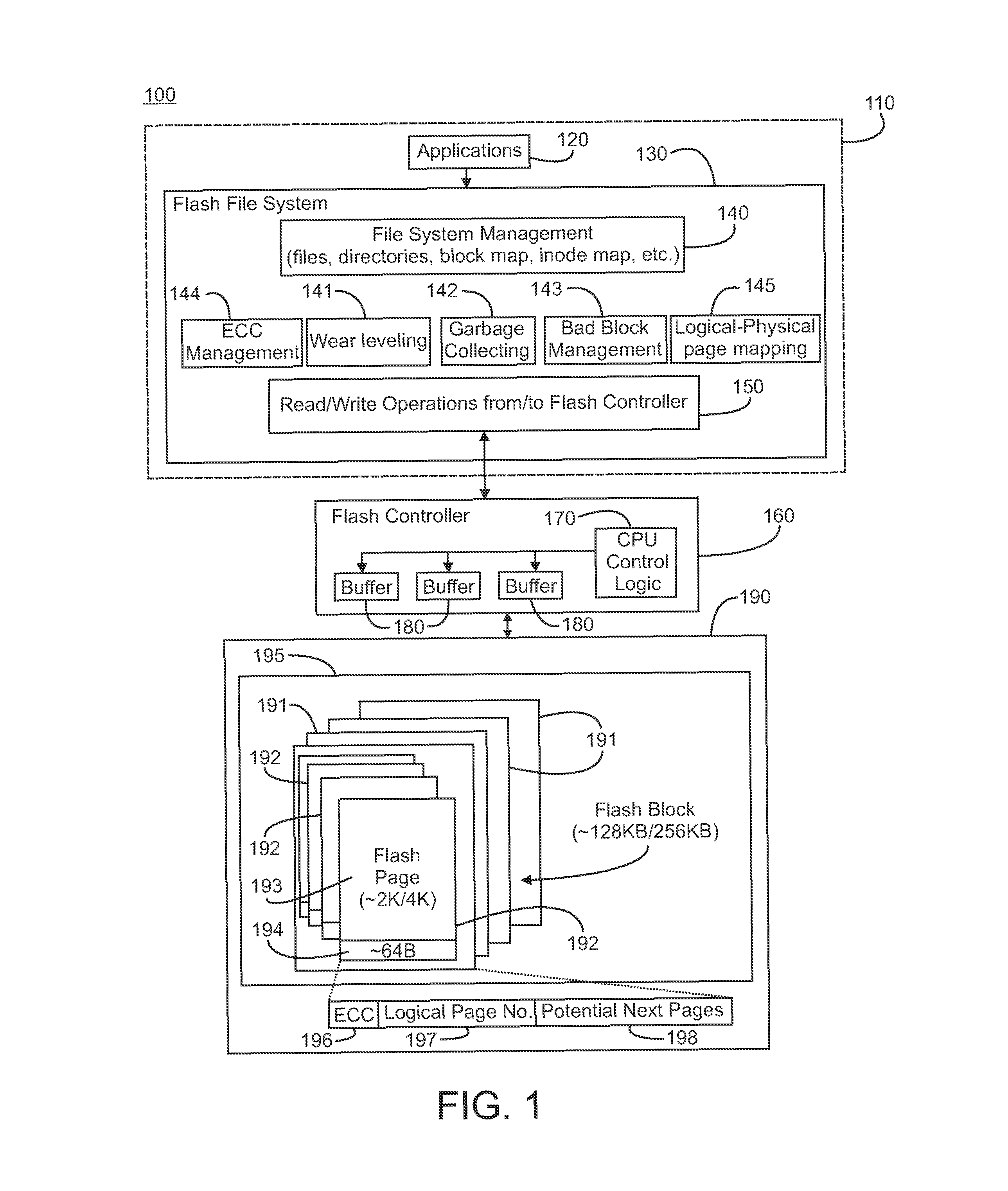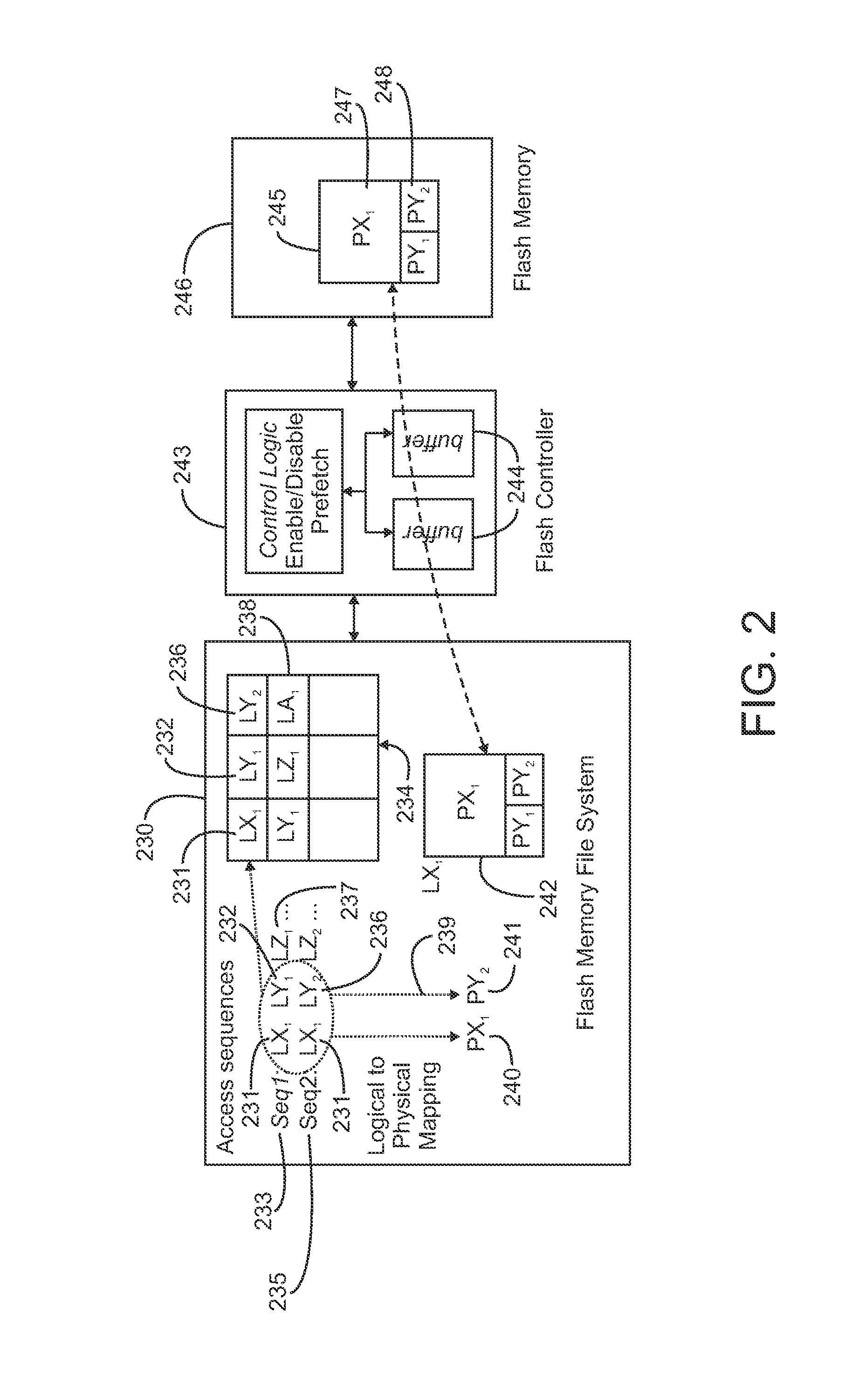Storing multi-stream non-linear access patterns in a flash based file-system
a file system and non-linear access technology, applied in the field of flash memory systems, can solve the problems of multi-stream information usually not being captured by the file system, requiring additional memory and storage space for capturing such information, and consuming so as to improve the performance of the computing system and memory, and achieve the effect of reducing the overhead of bandwidth and processing resources, and reducing the cost of storage spa
- Summary
- Abstract
- Description
- Claims
- Application Information
AI Technical Summary
Benefits of technology
Problems solved by technology
Method used
Image
Examples
Embodiment Construction
[0012]Referring initially to FIG. 1, a system 100 capable of logging and persisting access pattern information in accordance with the present invention is illustrated. As illustrated, the system is a flash-based file system; however, the present invention is not limited to use with a flash-based file system, i.e., a file system using flash memory devices, and can be used with any type of memory system to which data can be written to, read from and persisted. The system includes a computing system 110. Suitable computing systems are known and available in the art and include distributed computing systems. In general, the computing system includes the computers, servers and other processes necessary to host a plurality of applications 120. These applications run on the computing system and utilize one or more blocks of virtual memory within the computing system. As is known in the art, the virtual memory provides a plurality of logical memory addresses that are used by the application...
PUM
 Login to View More
Login to View More Abstract
Description
Claims
Application Information
 Login to View More
Login to View More - R&D
- Intellectual Property
- Life Sciences
- Materials
- Tech Scout
- Unparalleled Data Quality
- Higher Quality Content
- 60% Fewer Hallucinations
Browse by: Latest US Patents, China's latest patents, Technical Efficacy Thesaurus, Application Domain, Technology Topic, Popular Technical Reports.
© 2025 PatSnap. All rights reserved.Legal|Privacy policy|Modern Slavery Act Transparency Statement|Sitemap|About US| Contact US: help@patsnap.com



